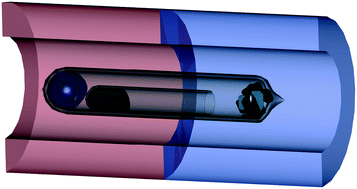Single crystal growth, transport and scanning tunneling microscopy and spectroscopy of FeSe1−xSx†
Abstract
Single crystals of sulfur-substituted iron selenide, FeSe1−xSx, were grown within eutectics of molten halides, AlCl3/KCl, AlCl3/KCl/NaCl or AlCl3/KBr, under permanent temperature gradient. The innovative “ampoule in ampoule” design of a crystallization vessel allows obtaining mm-sized plate-like single crystals with a sulfur content up to x ∼ 0.19. The sharp anomalies in the physical properties indicate the superconducting and nematic phase transitions in FeSe0.96 at TC = 8.4 K and TN = 90 K, respectively. Scanning tunneling microscopy reveals the presence of dumbbell defects associated with Fe vacancies and dark defects at the chalcogen site associated with S within the FeSe1−xSx series of compounds. Scanning tunneling spectroscopy shows the presence of two different superconducting gaps at both hole and electron pockets of the Fermi surface for low S content levels. As a function of sulfur content, TC follows the conventional dome-shaped curve while TN decreases with x. The overall appearance of the T–x phase diagram of FeSe1−xSx suggests the importance of nematic fluctuations for the formation of the superconducting state in these compounds.



 Please wait while we load your content...
Please wait while we load your content...
